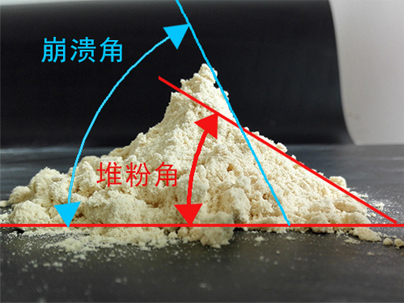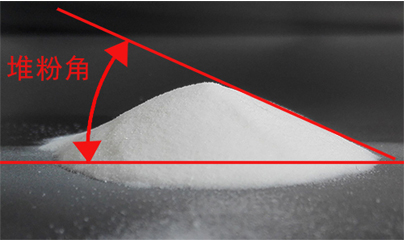

Fluidity of powders plays an extremely important role in powder mixing, and in general, the better the fluidity, the faster the mixing process; In extreme cases, having too much liquidity can actually hinder the mixing process. Therefore, we need to conduct in-depth exploration of convection.
1、 What is powders' fluidity?
The ability of powder to undergo displacement under the action of force.
Explanation: Refers to the performance of powder flow during mixing motion.
2、 Representation method for powder flowability
The simplest way to represent fluidity is to use powder stacking angles.
1. Powder stacking angle (angle of repose/angle of repose)
The angle between the inclined plane and the horizontal plane of the cone after natural accumulation of powder indicates the fluidity of the powder. The higher the angle, the better the fluidity of the powder.
Explanation: The angle of repose, also known as the angle of repose, refers to the angle between the inclined plane and the horizontal plane of the powder surface when the powder is poured onto a flat surface and allowed to flow around and stabilize. In practical applications, the stacking angle is usually used to represent the flowability of powder, because this method is easy to operate and intuitive. The smaller the inclination angle, the better the fluidity, and vice versa, the worse the fluidity as shown in the figure below.
2. Powder collapse angle
Only when the fluidity of the powder is particularly poor will the powder collapse angle occur.
During the process of powder accumulation, due to poor flowability, there will be a phenomenon of continuous pile up - collapse, collapse, and then pile up - collapse, collapse. The angle between the cross-section left by the powder after collapse and the horizontal plane is called the powder collapse angle, as shown in the following figure.